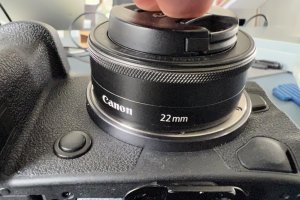That's sidestepping the question a bit. You're saying "Canon has been very, very successful so far", which isn't really answering "How much revenue will they fail to capture?". Hypothetically speaking and making up all the numbers out of thin air, Canon could gain 0.5% more market share by offering more RF-S, and they could have (in future hindsight, still inside the hypothetical) accurately predicted that but decided on a different course, e.g. less market share, more profit. Or they refuse to believe they can grow by introducing more RF-S lenses.
Anyone can play the woudla-shoulda-coulda game, there's really no answer to the question of,"How much revenue will they fail to capture?," by doing X or not doing Y. In this case, I suspect the line of questioning (how much revenue will they fail to capture if they don't offer RF-S glass) falls into the category of many comments/arguments made on this forum – namely, that Canon is doing or not doing something that an individual disagrees with, and thus Canon is probably (or definitely, according to some) making a poor business decision. In this case,
@kmrahe personally wants more RF-S lenses, and is phrasing that desire in such a way as to imply that Canon is losing revenue because they're not doing what he personally wants. I suspect the true answer is that Canon has decided to prioritize other lenses at this point, for reasons that make sense to them. That's where the 20 years of market leadership comes into play – history suggests they are usually right in these matters.
Maybe it's as simple as R&D resources being finite, and assuming FF lenses are more profitable it makes sense to concentrate resources on them.
However, consider the relevant historical comparison:
When the M system launched in 2012, it did so with only two EF-M lenses (but also with adapter compatibility to the full array of EF and EF-S lenses). They added one lens each year for the next three. Over the next several years, the M system grew to become the globally best-selling MILC line, eventually comprising ~17% of all ILCs sold.
When APS-C R cameras launched in 2022, they did so with only two RF-S lenses (but also with direct compatibility with nearly 30 RF lenses and adapter compatibility to the full array of EF and EF-S lenses). So far this year, they've released one more RF-S lens.
Sound familiar? Time will tell of the APS-C R bodies rise to the prominence of the EOS M line. Ror the month of February the R10 + RF-S 18-150 kit was at #2 on BCN's list of best-selling ILCs in Japan, which bodes well as an indication of the future direction for APS-C EOS R cameras.



